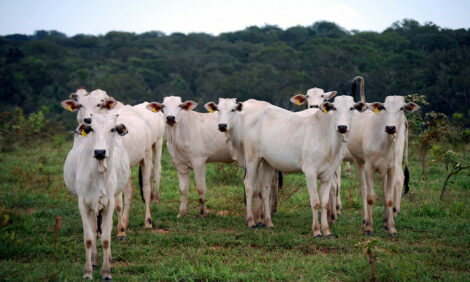



Global Demand Supports Dairy Export Potential
EU - EU milk production is estimated at 151 millions in 2011 and is expected to remain similar in 2012 and 2013. EU agricultural markets continue to be strongly affected by the macroeconomic outlook, according to the European Commission's Short Term Outlook for February 2012.Milk production and deliveries to dairies
EU cow milk deliveries to dairies are estimated to have increased by 2 per cent in 2011; with France, Germany, Ireland, Poland, the UK and Austria as the main contributors to the growth. This positive trend is expected to continue, albeit at a slower path, in 2012 (+1 per cent) and in 2013 (+0.6 per cent).
Milk production is estimated to have increased by 1.5 per cent in 2011, and is expected to continue increasing in the next two years. The average yield per dairy cow is estimated at 6 431 kg (+1.9 per cent) in 2011.
A continuous increase in milk yields both in EU15 and EU12 would compensate for the contraction in the dairy herd, which is estimated at - 0.8 per cent in 2011 and to decline further in 2012 and 2013.
On the basis of Eurostat data on milk delivery (available up to November 2011 only), a number of Member States appear to be on course for overtaking their national quota ceilings.
Milk producers may try to adjust their delivery pattern accordingly in the final weeks of March, which would influence the quantity of milk available for processing.
Dairy commodity markets
Total cheese production is estimated to have slightly increased in 2011 (+0.2 per cent compared to 2010). Domestic use is expected to have remained broadly unchanged, and demand from importing third countries slightly increased, despite a modest reduction in Russian imports of EU cheese (total EU exports are estimated to have increased by a mere 0.9 per cent compared to 2010).
Production is expected to increase further in 2012 and 2013, at a growth rate of 0.8 per cent in both years, sustained by a potential for consumption growth in EU12 and improved export performance.
After a positive production trend registered in 2010 for fermented milk, drinking milk and even more so for cream, total fresh dairy production is estimated to have slowed down its expansion in 2011 (+0.3 per cent). Production is expected to continue growing both, in 2012 and 2013, in view of prospects for sustained domestic and world demand.
Whole milk powder (WMP) production is estimated to have contracted in 2011 (-3 per cent compared to 2010) and a rather stagnating trend is foreseen in 2012 and 2013. EU WMP exports are estimated to have declined in 2011, but a slight recovery could be expected in the near term due to better EU price competitiveness and a more favourable exchange rate.
Skimmed Milk Powder (SMP) production is estimated to have increased by 13 per cent in 2011. A further expansion could be possible in 2012 and 2013 (by 4 per cent and 2 per cent respectively). Market perspectives would continue to be driven by a strong import demand.
Exports are estimated to have grown by 37 per cent in 2011, and they are forecast to stay at this high level during the next two years. China has been gradually becoming an important player in world SMP imports, but a substantial increase in exports to North African countries (Algeria, Egypt) has also taken place. SMP intervention stocks built up in 2009 are expected to be completely sold out by the end of 2012 through the most deprived person's scheme.
Total butter/butteroil production is estimated to have increased by 2 per cent in 2011 and is expected to further increase by 1.1 per cent and 1 per cent in 2012 and 2013. Imports have declined in 2011 due to unprecedented high prices on the world market, but EU exports were unknot competitive, given the existing price gap between EU and world quotations. A modest recovery is expected in 2012 and 2013.
Uncertainties
The dairy outlook is subject to a number of uncertainties linked to the general macroeconomic environment, weather conditions, and milk production developments in major supplying third countries.
Concerns exist regarding economic growth in the EU-27 and the influence of a solution to current economic and financial difficulties in the Eurozone on the Euro exchange rates.
Although the current outlook assumes a consolidation of EU consumption of value added dairy commodities, and a positive global demand supporting EU export potential, uncertainties remain, resulting from current economic conditions.
While the global market situation has been rather favourable in 2011, expectations for the outlook period very much depend on the path of economic growth in 2012, and the sustainability of strong demand on the world market led by China, other countries of South–East Asia as well as by the Near and Middle East.
The extent of increased milk production both in the EU and in the main supplying countries (New Zealand, Australia, the US, etc.) would also play a key role.
Further Reading
| - | You can view the full report by clicking here. |
TheCattleSite News Desk


